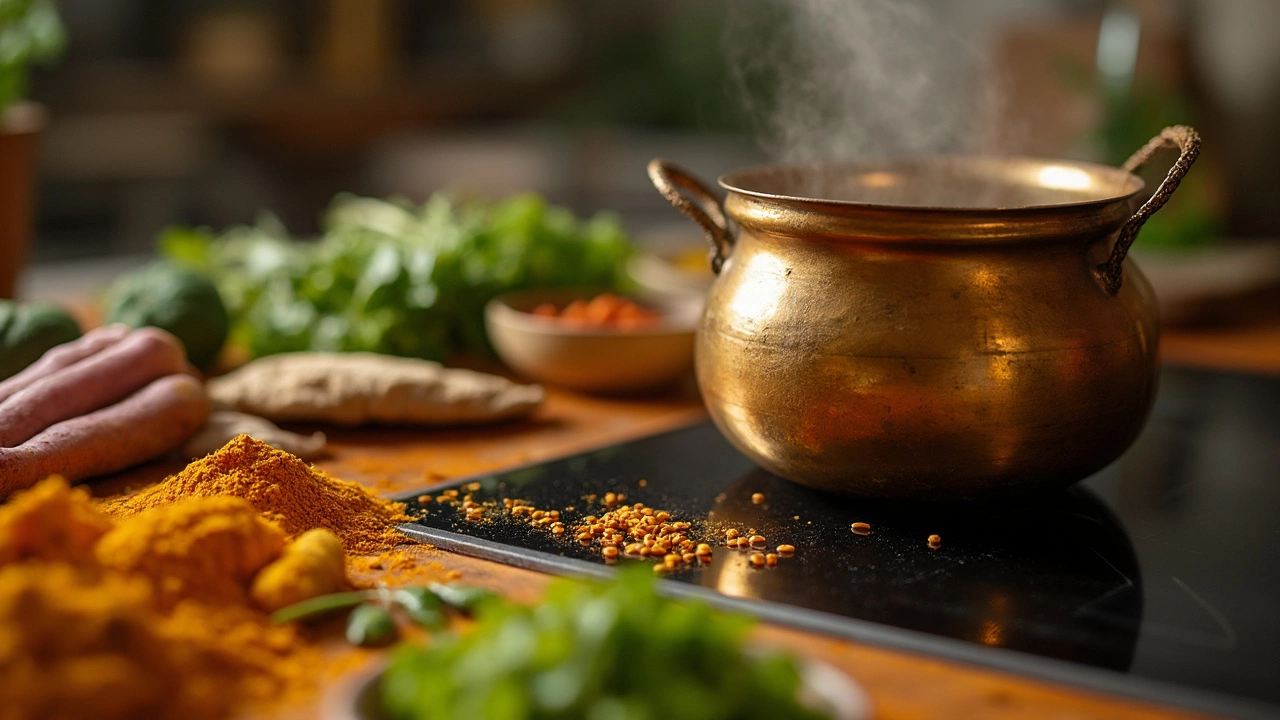Ever wondered what goes on behind the scenes in your favorite snack's journey from farm to table? Enter the world of food processing, where raw ingredients get transformed into the delicious goodies we enjoy every day. Central to this transformation are unit operations — the backbone of food processing techniques.
Think of unit operations as the building blocks of the food manufacturing process. They include all the steps that change and preserve food inside factories, from mixing to heating and cooling. Whether it's creating a perfectly uniform dough or ensuring your soup reaches the right temperature, these operations are crucial.
Each operation has its role to play. Mixing and blending ensure that ingredients are combined evenly. Heating and cooking do more than just warm up — they kill bacteria and enhance taste. Cooling and freezing, on the other hand, lock in freshness and extend shelf life. Knowing these processes helps us appreciate the effort behind every food item on our shelves.
- Introduction to Unit Operations
- Mixing and Blending
- Heating and Cooking
- Cooling and Freezing
- Impact on Food Quality
Introduction to Unit Operations
In the world of food processing, the term 'unit operations' might sound a bit technical, but they're really just the basic steps or stages involved in turning raw ingredients into finished products. From the simple act of mixing ingredients to complex processes like pasteurization, these operations are fundamental to the industry.
At its core, a unit operation is any distinct procedure or function that involves a physical change or a simple chemical transformation. Picture it like putting together a puzzle where each piece represents a specific function—whether it's blending flavors for consistency or packaging the end product for distribution.
The Role of Unit Operations
The purpose? Well, it's all about efficiency, safety, and quality. Having standardized operations ensures that no matter where or by whom the food is produced, it meets specific safety and quality standards.
- Safety: Each operation, like heating, is designed to eliminate pathogens or harmful organisms.
- Quality: Operations aim to preserve the taste, texture, and nutritional value of food.
- Efficiency: Streamlined processes help save time and reduce waste, making them cost-effective.
Common Unit Operations
What are some common operations you ask? Here's a glimpse of a few:
- Mixing: Making sure every ingredient blends perfectly, whether it's a dough or a sauce.
- Size reduction: Cutting or grinding larger pieces down to size, like turning potatoes into fries.
- Separation: Getting rid of unwanted components, such as seeds or bones.
- Heat treatment: Cooking or pasteurizing to destroy bacteria and make food safe.
- Cooling: Extends shelf life by keeping food at the right temperature.
During these operations, food undergoes a transformation to become safe, delicious, and ready for us to enjoy.
Statistics to Note
Did you know that approximately 90% of food industries employ heat-related unit operations in some form? This only underscores the importance of these processes in ensuring food safety and quality.
| Operation | Common Use |
|---|---|
| Mixing | Bakeries |
| Size Reduction | Snack Manufacturing |
| Heat Treatment | Dairy Processing |
| Cooling | Frozen Foods |
Mixing and Blending
Mixing and blending are essential unit operations in the food processing industry. These processes are all about getting different ingredients to come together in harmony, forming a uniform product that tastes the same with every bite. It sounds simple enough, but there’s more to it than just stirring things together.
In the world of food production, mixing involves incorporating ingredients until they achieve a homogeneous mixture, while blending is slightly more delicate, often used for dry ingredients. For instance, consider the difference between making bread dough and a spice mix. Both require precision, but the tools and techniques differ slightly.
Industrial Mixers and Their Roles
Industrial mixers, like ribbon mixers or paddle mixers, play a key role in food processing. They ensure that every ingredient, from flour to tiny amounts of salt, is evenly distributed. This is crucial in industries that require consistency and safety in every batch, like in the production of pharmaceuticals or baby foods.
"Consistency in mixing is pivotal because variation can lead to uneven baking, flavor disparities, and safety concerns," says Samantha Reed, a food processing engineer at a leading UK-based company.
Correct mixing ensures that the end product not only tastes as it should but also meets safety standards. An uneven mix can result in hot spots or spoilage, particularly with products that rely on preservatives.
Optimizing the Mixing Process
To optimize mixing and blending, factors such as particle size, density, and moisture content are considered. For wet mixtures, speed and time are critical to avoid over-mixing, which can break down ingredients and ruin textures.
- Speed and Duration: Faster isn't always better; sometimes slower speeds and longer mixing times yield the best results.
- Equipment: Choosing the right mixer for the job can make all the difference. High-shear mixers, for example, are designed for viscous materials.
- Sequence: Adding ingredients in the correct order prevents clumping and ensures homogeneity.
Technological Advances
Today, technology plays a significant role in improving mixing efficiencies. Automated systems with sensors can adjust speed and duration based on real-time feedback from the mixture. This minimizes human error and enhances consistency.
Understanding the complexities of mixing and blending not only helps producers create better products but also ensures that what we consume is safe, consistent, and delicious. From bakeries to big industrial plants, these processes continue to be the unsung heroes in our everyday meals.

Heating and Cooking
When we talk about heating and cooking in food processing, we're referring to much more than just slapping something on a stovetop. These processes are vital for making our food safe, delicious, and long-lasting. They play an essential role in food safety, ensuring harmful microorganisms are eliminated.
Heat Treatment Methods
Different foods require specific heat treatments. Here are some common ones:- Pasteurization: This method uses mild heat, typically below boiling, to eliminate pathogens and extend shelf life. Milk is a classic example, heated just enough to kill bacteria without spoiling taste or nutrition.
- Blanching: Vegetables often go through this process. A quick boil followed by rapid cooling helps inactivate enzymes that would otherwise spoil them.
- Boiling: A basic yet effective technique for cooking and sterilizing. Grains, vegetables, and meats often take a dip in boiling water.
- Baking and Roasting: These dry-heat methods cook food and enhance flavors and textures, giving that golden crust we love on bread.
- Frying: Involves cooking food in oil, adding crunch and flavor.
Importance in Food Quality
Beyond safety, heating and cooking are critical for flavor development and texture. Ever wondered why bakery bread tastes so good? It's the heat that caramelizes sugars and browns proteins, creating mouth-watering aromas and crusts.There's also the nutrient angle! Heating can sometimes reduce vitamins, but it also makes some nutrients like lycopene in tomatoes easier to absorb.
Efficiency in Large-Scale Production
In large food factories, heating isn't just about a hot top. We see conveyor belt ovens and steam tunnels designed for continuous cooking. These systems handle vast amounts of food efficiently. By controlling temperature and time, they ensure product consistency while keeping vitamin loss minimal.Many industrial food producers invest in state-of-the-art heating techniques to optimize energy use. Studies have shown that continuous heat processing methods are generally more energy-efficient than batch processes, making them a preferred choice in the industry.
Heating and cooking are always evolving, driven by a need for quality and efficiency. The next big thing might involve less energy use. One can only imagine!
Cooling and Freezing
Cooling and freezing are the unsung heroes in the world of food processing. They keep food safe to eat by slowing down the growth of harmful bacteria and ensuring that tasty goods reach our homes as fresh as they left the factory.
How It Works
The process essentially involves lowering the temperature of food so that biological activity slows way down. Refrigeration typically brings food to temperatures above freezing, which suits perishable items like dairy and fresh produce. Freezing, on the other hand, preserves food by converting the water content in foods into ice, effectively halting microbial growth.
Methods and Technologies
- Blast Chilling: This method rapidly lowers the temperature of foods using cold air circulating at high speeds.
- Plate Freezing: In this technique, foods are placed between cold metal plates which conduct heat away from the food.
- Cryogenic Freezing: This involves using substances like liquid nitrogen for quick freezing, useful for items requiring short freezing times like gourmet ice creams.
Benefits
The biggest win here is extending the shelf life of the food products. Cooling and freezing help maintain the texture, nutritional value, and flavor, giving you delicious and healthy meals ready to go whenever you're hungry.
Additionally, these processes are essential in minimizing food waste, which is a significant step toward sustainability and reducing the carbon footprint of the food industry.
With continuing advancements in food industry technology, it's amazing to see how cooling and freezing techniques have evolved to keep up with both industrial needs and consumer demands.

Impact on Food Quality
When it comes to food processing, the big question is always about quality. How do the unit operations affect what we put on our plates? Spoiler alert: quite a lot.
Preserving Nutritional Value
Vital nutrients can either get lost or preserved depending on the operation. Take heating, for instance. While it's essential for destroying harmful microorganisms, it can also lead to nutrient loss if not done correctly. On the flip side, quick techniques like flash freezing help retain vitamins and minerals, making sure your frozen fruits are as nutritious as possible.Texture and Consistency
Everybody loves the creamy texture of ice cream or the perfect crunch in a cracker. These aren't happy accidents. Mixing and blending play significant roles here. Ensuring the right texture is about controlling particle sizes and distributing ingredients evenly—key to hitting the sweet spot of 'just right'.
Enhancing Flavors
Unit operations aren't just about preservation; they're about taste too. Ever wondered why some canned soups taste incredible? It's all thanks to proper heating that allows flavors to meld together, creating that hearty, home-cooked vibe. But too much heat, and you lose those delicate notes.Ensuring Safety and Shelf Life
Heat treatments can't be overlooked in ensuring products are safe. Operations like pasteurization and sterilization dramatically extend the shelf life of products while making them safe. And let’s not forget cooling and freezing which not only stop spoilage but also keep food tasting fresh longer.So, the next time you snack on something processed, remember there's a world of careful science ensuring it tastes good, stays fresh, and keeps you safe.











Write a comment